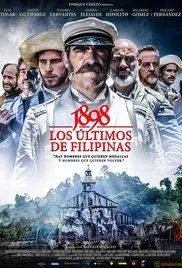Historical accuracy of 1898, Our Last Men in the Philippines

Historical accuracy of 1898, Our Last Men in the Philippines

Characters
Lieutenant Saturnino Martín Cerezo
Lieutenant Martín Cerezo was a real historical figure who led the besieged Spanish garrison in Baler. The film accurately portrays his stubborn defense and adherence to orders.
Corporal Julián Alonso Zayas
Corporal Alonso Zayas was a real member of the Baler garrison. The film's depiction of his dedication and participation in the siege aligns with historical accounts.
Private Juan López Díaz
Private López Díaz was a real member of the Baler garrison. The film accurately depicts the hardships endured by the soldiers during the siege.
Father López
Father López was a real priest who was present during the siege of Baler. His role in the film, including his attempts to negotiate and maintain morale, is based on historical records.
Calixto Villacorta
While Villacorta was a real Filipino commander involved in the siege, the film's portrayal of his interactions with the Spanish garrison is somewhat dramatized. He did lead the Filipino forces, but the film takes some liberties.
Rogelio Vigil de Quiñones y Alfaro
Rogelio Vigil de Quiñones was a real Spanish medic who was part of the garrison. The film accurately shows his dedication to caring for the wounded during the siege.
More characters
Filipino characters
The film includes Filipino characters, but their perspectives and motivations are not explored in depth.
Story
Spanish garrison in Baler
A detachment of Spanish soldiers was stationed in Baler, Philippines, in 1898.
Siege by Filipino forces
Filipino revolutionaries besieged the church in Baler where the Spanish soldiers were stationed.
Siege lasted 337 days
The siege lasted for 337 days, from June 1898 to June 1899.
Soldiers unaware of war's end
The soldiers were initially unaware that Spain had lost the war and ceded the Philippines to the United States.
Lieutenant Cerezo's command
Lieutenant Martín Cerezo took command after the death of Captain Enrique de las Morenas.
Conditions inside the church
The film realistically portrays the cramped, unsanitary conditions, and dwindling supplies faced by the besieged soldiers.
Psychological toll on soldiers
The film captures the psychological strain of prolonged isolation, fear, and uncertainty.
Fray Carmelo's role
A friar named Fray Carmelo tried to convince the soldiers to surrender, but they initially refused.
Carlos's attempts to end the siege
While a soldier named Carlos did play a role in ending the siege, the film may embellish his actions for dramatic effect.
Reasons for continued resistance
The film attributes the resistance to Cerezo's stubbornness, but other factors likely played a role, such as distrust of the Filipinos and fear of capture.
Ending of the siege
The siege ended when the soldiers finally surrendered after realizing the war was over.
Overall
Overall historical accuracy
1898' is generally accurate in depicting the events of the Siege of Baler, but it primarily focuses on the Spanish perspective and may oversimplify some aspects.
